Exhibition
Pendulum
Jonathan Kim
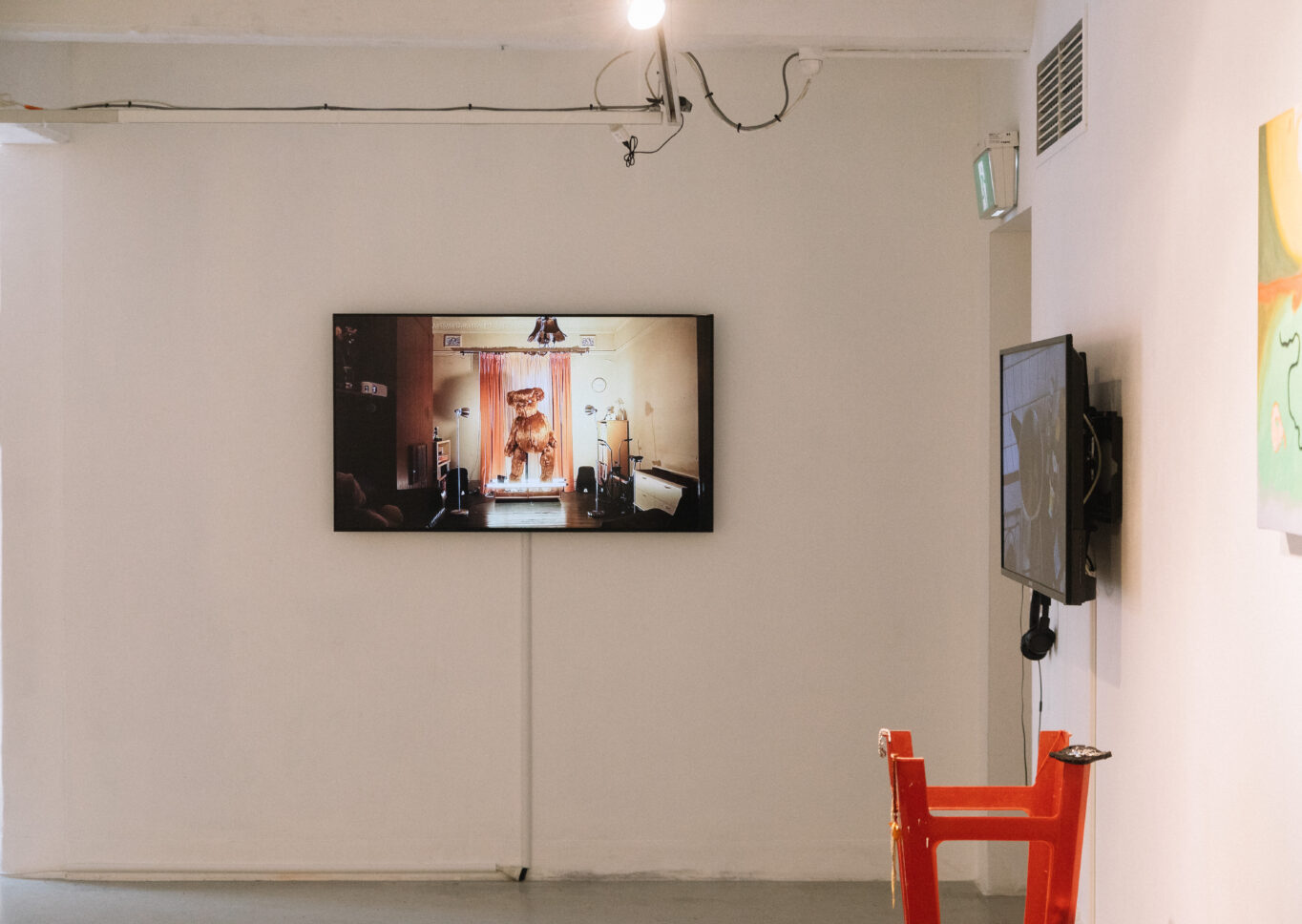
Photograph: Thomas McCammon
About the exhibition
Acculturation is the process of assimilating into a new culture, learning and incorporating the values, beliefs, and customs of something new into that which is already established. It can be a difficult process, fraught with uncertainty and intense change.
Curated by Jonathan Kim, Pendulum sees six second-generation Asian immigrant artists explore this process. Suspended between two cultures, South Australian artists Shaye Dương, Jazmine Deng, Jake Yang, Alice Hu, as well as ej son and Chris Yee (NSW), explore how their arts practices are affected by cultural displacement and the restoration that comes from reconnection, swinging from one to the other like a pendulum.
Pendulum
This is an audio description for Pendulum, curated by Jonathan Kim as part of Oz Asia and presented by Nexus Arts Gallery on Kaurna Country, Adelaide, South Australia. The exhibition is available to experience in person from the 13th of October to the 18th of November, 2022.
Shaye Du’o’ng, Faltar, 2022, paraffin wax, brick, assorted fixtures, dimensions variable
Entering the gallery, we first come to a plain white wall around 2m in front of the door. At the base of this wall is a small shrine, around 1m high, mostly consisting of a paraffin wax sculpture on top of rows of light brown bricks.
The bricks are around the size of standard house bricks, about 10cm x 20cm on top and around 5cm high. The stack consists of 5 rows of bricks, 3 bricks deep.. The bricks on the far right and left are two bricks high, the ones in between four bricks high. On the shorter side stacks are an array of tall white candles dripping with wax, and small realistic models of cabbage leaves, and carrots and cucumber sliced into various floral shapes.
In the centre on the taller stack of bricks is a milky white platform made of paraffin wax; it has a low decorative fence around it. In the centre of this is a square house-like shape with a gently pitched roof, all made of paraffin wax. There is curved and floral detailing around the front of the shrine, and on eaves that sit on each side.
The floor of the shrine and its larger platform are also decorated with intricately sliced carrots and cucumbers in the shapes of flowers, large pale green cabbage leaves, and more dripping white candles.
In the centre of the small shrine house is a white vessel around 10cm wide, with handle-like protrusions on either side. Sticking out of this vessel are burnt and unburnt incense sticks.
The rest of the exhibition takes place in the main Nexus Gallery room, which is a white-painted space around 4m wide and 6m long, with a thick white column in the centre.
EJ son, Dancing Machine a.k.a. Dancing Teddy, 2022, single channel video, 5mins 3 secs
The next work is displayed on a large TV screen, to the left as you enter the gallery.
The video is accompanied by a subtle jazz soundtrack. A large teddy approximately 2 metres tall dances in a dark atmospheric living room. As the video begins the teddy is already swaying from gently from side to side, moving its articulated hips. Light seems to pour through the eye holes of the dancing teddy, as if (bouncing off black button eyes or) penetrating through holes, bestowing it with an eerie watchful presence, looking back at us.
The dancing teddy is suspended from a pole and stands on a small platform that has two long fluorescent lights attached to its base. The lights burn brightly, highlighting the legs and lower belly of the dancing teddy and reflecting off the polished wooden floorboards. The teddy dances in front of drapes that hang from a picture rail which runs around the perimeter of the high-ceilinged room, about a foot below a wide embossed cornice. The orange drapes cover a long narrow window at the end of the room, and some light bleeds into the room through the curtains. Two decorative vents sit above the picture rail on either side of a window. The hands of a round clock on the right show the time as 2.50.
Against the wall to our left, another teddy sits with their back to us, feet up on a dark leather couch. The reclining teddy is watching the dancing teddy. A single, narrow shelf laden with objects sits along the wall above the teddy on the couch. Amongst the objects is a vase full of orange flowers. Midway along the right wall and jutting into the room is a fireplace lined in vertical planks of brown wooden timber. In the front of the fireplace is the door of a combustion heater. Other items of furniture in the room are two bookshelves that sit along the walls, either side of the dancing teddy. In front of them on the end wall are large black speakers that angle towards us.
On the wall to our right next to the bookshelf, is an exercise bike that sits on a stand and then a mid-century sideboard with four drawers, divided into two by two. Then an angled armchair, that matches the couch on the opposite side of the room. A pendant lampshade that hangs from the ceiling completes the décor. Two bronzed standard floor-lamps have been placed equidistant from the teddy, one on the left in front of the heater, the other alongside the bike on the right.
There is no change in the side-to-side hip movements of the Dancing Machine, which references the Instagram sensation #zerotodance, however the action is performed at a slower pace and due to the stiff nature of the teddy, when the teddy’s hips move the whole body is involved in the rocking motion. Part-way through the video a lighting change occurs as the standard lamps switch on, illuminating the stage-like space of the dancing machine set-up in front of the curtains and spotlighting the Dancing teddy. This allows us to see in more detail its round head and semi-circular ears, the sturdily stuffed rounded belly and articulated arms and legs. The light also amplifies the soft golden-brown velvet like texture of teddy’s fur, it’s solid stuffing, tight seams, and rigid limbs and it projects a large shadow that moves back and forth, flickering against the back left corner walls of the room. The music and repetitive action of the movement is relaxing and hypnotic. In the final 10 seconds of the video as the music fades, the light gradually disappears, and the screen becomes dark before the loop resets.
Jazmine Deng, loving/dying/hating/living (I’ve come to a gradual state of undoing), 2022, single channel moving image, red chinese stools, jelly jeans, man tou, my mother and grandmother’s jewellery, chinese broom, found paraphernalia from my family home, sound recordings taken from inside of my family home, footage of food to be eaten, food to be cooked, food to be thrown out, younger sister playing the piano
This video by Jazmine Deng is 9 minutes long. It contains some text about some triggering topics including sexual assault.
Throughout the video, stream of consciousness text appears across the screen, for example, “To the girl next door who I always thought was something special I really just loved the way you hit me / in a blind eye, in the flash of a wake YOU helped me oh my god you did not hurting not hurting not hurting anymore”. Videos of cooking food and backyards play and are distorted by low-res home movie effects, mirroring the videos, bouncing smaller versions of them across the screen, and curving into unrealistic colours.
Jazmine Deng, oranges and kiwis, 2022, acrylic paint on canvas, 61cm x 61cm
This square acrylic painting is hanging around 1.5m up the wall. The top half features an upside-down yellow half-circle against a dark green background, with a pink and blue swirl at the centre and smaller red swirls to the right.
Across the middle of the painting is a rough red line coming in from the left and ending just after the middle, turning into blobs of pale blue, gentle lilac and pale pink.
Beneath this is a roughly circular bright green shape against a brown background. Within the shape are squiggles in glittery pink, black and a multicoloured loop of yellow, pink and blue.
At the base of the painting to the left is a smudge in darker lilac-purple.
Jazmine Deng, for me it was my whole life, 2022, acrylic paint, colour pencil, graphite, canvas paper, paper, beads, string, nail polish, glitter, 40.5 x 50.5cm
Resting on the floor is another painting, 40 x 50 cm in a portrait orientation.
In the top half of the painting is a background of watery wash paint in purple and blue. To the left side is a blue dome with stripes of red and purple inside, and some thinly outlined butterflies. Small off-centre text in glitter paint reads, “For me only”. There are some streaks of green across the right.
The bottom half of the painting has a background of splashes of dark purple. To the right is a brown and green splodge of paint, and coming out of this splodge is a string of bright colourful beads pinned three times to the work, creating a loose W shape.
In the bottom right is a sticker of a cartoon lamb in a blue coat.
To the right of this painting, also resting against the wall, is a short broom. Against the floor is the brush of the broom, a roughly cut array of straw-like material. The stick is white and green striped, and sitting atop the end of the broom is a yellow washing-up glove. On the ring finger of the glove is a silver ring.
To the left of the painting are two red stools, one positioned upside down on the other. Within are an assortment of objects including a long piece of bread between two eggshell halves; a small gold trinket; rainbow coloured aquarium gravel and lead pencils.
In the centre of the gallery is a permanent white column; more of Jazmine’s work decorates the base and top of the column. At the base sits a fish tank empty of water but full of aquarium gravel, clear glass trophies, little trinkets like flower erasers and beads. It is all brightly coloured.
At the top of the column up near the ceiling is a small platform, atop of which sits a cup of instant ramen. A sauce packet is stuck to the side of the column.
Jake Yang, Installation, 2022, oil on board, taffeta, silk, beads and charms, 24-55 cm
This installation of seven circular paintings is situated in the South-Eastern corner of the gallery. The walls have been painted a soft mid green 3 meters in either direction from the corner, so that the total space is 3m high by 6m wide/long. Painted directly onto the green walls and flowing behind and between the series of seven round mirror-like paintings are 3 dark green calligraphic like symbols. The individual paintings vary in size between 45 to 55 centimetres in diameter.
The seven works create a symmetrical pattern: three in the middle, hanging with their backs to the corner of the room. On the left side of these are two more circular paintings, one near the centre work and one further out and higher up; on the right side are another two, mirroring the arrangement.
The top work in the centre is titled, ‘Fortune says: it’s Britney, bitch’. An oil painting on board, it measures 45 centimetres in diameter with an additional 10cm gathered satin fabric frill that acts as a subtle grey-green frame for the piece.
The focus of this piece is a large broken fortune cookie, the pastry of its shiny crust has been painted with a lovely gleam, and a thin strip of white paper unfurls like a banner from the top half of the cookie displaying the words in the title, “it’s Britney, bitch’. The cookie sits on a grey background. The edge of the 12mm thick wooden board is painted green and the satin fabric frill sits around the edge of the painting.
Below this work is the second painting, ‘Speak Mandarin, it’s an asset’. This painting measures 50 centimetres in diameter and has a green painted edge. A transparent plastic manicure pouch has been enlarged to take up most of the space in the composition, it is highlighted against an uneven background of green gestural brushstrokes. The pouch is lime green and contains a couple of shaped nail tools and a metal nail clipper. Its plastic lid is closed, and four short lines of small black text on the pouch state ‘Speak Mandarin, it’s an asset’ in English and then Chinese characters. The pouch is painted hanging on a metal hook from a chain made of small metal balls. The hook is extremely foreshortened.
The third work below this is ‘Curious Devil Boy’ a 50-centimetre round oil on board, with a green taffeta edge. The remaining five paintings depict the same male figure.
In this work Yang depicts a young man standing in a position that looks as if he is about to take off. He wears a black hat with small, pointed ears at the top, black hair hangs either side of his face, and he glances down- at or past his feet. He wears a short-sleeved grey button-through shirt over a pale long-sleeved light-grey sweater. His arms are held straight out to the sides and are slightly lifted so his hands are at waist level. The sides of his shirt are tucked into the waist of his brown pants. He wears shiny black boots on his feet. It appears as if he is standing, feet together on a high ledge.
The background is painted wet-on-wet so that the brown colours partially blend and create a swirling dynamic backdrop to this focused young man. Hanging from the bottom of the painting are 5 carefully knotted cords that dangle in a triangle, they hold various beads and crystals. The longest black cord in the middle displays a complex knot and long tassel.
The fourth painting in the installation is to the right is ‘Devil Boy’ this work is about 50 centimetres in diameter with a black fabric edge. In this work Yang paints a close-up portrait of ‘Devil Boy’. He gazes to the left, light reflects from his forehead, across his slightly puffy almond shaped eyes, broad nose, and cheeks. A thin moustache grows above his full lips. His eyes, eyebrows and longish hair are dark brownish black.
Devil Boy again wears a cap of black textured fabric that is cut out and glued to the board on top of the painting. The black fabric cap is ‘hood-like’, it has pointed ears that curve inwards at the top. It covers Devil Boy’s ears, and a wide band secures it around and underneath his chin. He wears a dark crew-neck sweater, that emphasizes a gold medallion that dangles on a chain around his neck. His shoulders are slanted, the left shoulder sitting slightly higher than the right. The background is painted in ochres and raw sienna, a yellowish-brown and the edge of the painting is finished with black fabric.
The fifth painting ‘Devil Boy with Cranes’ hangs to the right, at the same level as painting four. It’s 50 centimetres in diameter and has an edge of green folded silk. It is another close-up of Yang’s ‘Devil Boy’, this time his head is turned to the right and he massages his right eyebrow with his right hand. He wears a cap of green figured silk, and the neck and head of a graceful crane is shown on either side of him. The cranes are also cut from the same floral silk of pale greens and creams, highlighted with darker green leaves and some touches of pink and orange. The fabric cap and crane shapes are stuck to the board on top of the painting, some of the silk edges are slightly frayed. Cranes are a well-recognised symbol of longevity. In this piece ‘Devil Boy’ wears the same dark crew-neck windcheater, gold chain and medallion. The background is finished with expressive sweeping dark brown brushstrokes.
The final two paintings in the installation hang to the far left and right of the group, at the same level as painting two, ‘Speak Mandarin, it’s an asset’. On the far left is ‘Devil Boy, tiger trinket’ measuring 50 centimetres in diameter with a green painted edge.
Brown, greys and murky greens inhabit the background of this round painting in which ‘Devil boy’ squats on his heels, his black fabric cap with its curved horn-like corners perched on his head. His arms hang loosely over his bent knees and from this squatting position he stares at the ground between his hands. The black fabric hat and shiny painted black boots are striking and reinforce the dark brown ring, that encircles his left index finger. The figure occupies about half the vertical space in the work. Three thin cords hang below the lower edge of the painting, they hold beads between spaced knots, the longer central cord carries a tiger charm.
On the facing wall is the seventh painting that hangs on the far right of the group, it’s titled ‘Devil Boy, rooster trinket’ also about 50 centimetres in diameter with a fabric edge, it dangles several threaded charms from three cords that hang below the piece.
Again ‘Devil boy’ is squatting, his black fabric cap with curved horn-like corners on his head. As in the work on the left, he looks down to a spot on the ground between his arms which hang loosely over his knees. He wears the same outfit, however this time the dark ring encircles the index finger of his right hand. His downwards gaze could be focusing on the string of trinkets that hang below the edge of the painting. The centre cord holds a rooster charm on a red thread, spaced between pale round beads. Expressive brushwork in the background of this round painting describes a pale, luminous empty space.
Alice Hu – paintings, ceramics
Alice Hu’s work consists of three paintings and a sculpture, all installed in the corner of the gallery.
On the ground is Hu’s sculpture, which consists of an array of white smashed ceramic pieces. The piece was not originally intended to be in pieces, but the large ceramic work broke in the kiln. In the corner of the room is the largest piece, a low white plinth, around 10cm high, 30cm across and 30cm deep. On the plinth is what looks like a hooded creature around 40cm high, with a long, skinny arm around itself. At the base of the creature are pieces that look like human-hand-sized webbed duck feet.
A little closer to us is another plinth of the same size. On this are many shattered pieces, including the top of a bird’s head around 20cm long. The head is slightly textured with veins at the top and scratches indicating feathers at the sides. A large, blank eyeball stares out from its head. A short beak tapers off to the right.
The plinths and the creature pieces are surrounded by many broken ceramic pieces, ranging from 30cm across to handsize to only a cm wide. The pieces are glazed white on one side, and bare pale brown clay on the other.
*
On the wall to the right is Hu’s first painting. It is around 60cm square. Within the painting are many small black, white and grey figures, simple long, straight, verticle forms topped with small circular heads, joining together to form a larger, lifesize shape of a person’s head, shoulders and chest. Starting at the bottom of the painting, black figures begin the person’s chest; as we move up the painting the figures turn to grey, then paler grey at the neck. The figures within the head are white.
The background of the painting is the inverse; starting at the top, the figures are upside down and black, and they fade to grey, then white at the base.
*
On the wall in front of us are two similar paintings of Hu’s. They are both around 50cm wide and 90cm high. In each, an elongated, simplified female figure is squished into the rectangle of the painting as though trapped in a cage. The figures are pale pink with minimal shading. The extremities of their bodies, hands, feet, shoulders, knees, are a darker pink, giving the figures an injured look.
The figure to the left sits with her legs drawn up to her chest, her right arm up against the side of the work. Her head leans against her right hand. The figure in the right painting is seated with her back against the right side of the painting, her knees pulled up against her chest. One leg is up with her foot pressing against the top of the work, and the other is pushing against the left side of the work, the foot turned up en pointe like a ballerina.
Each figure has empty black eye sockets, sadly curved up in the centre of the face.
Chris Yee, Tapestries, 2021
These three works by Chris Yee, are woven multi-coloured cotton tapestries that measure 54 inches x 72 inches (or 137 x 182 centimetres) they hang along their top edge via a series of small metal rings. The edges are finished with a short multi-coloured fluffy fringe of between 3-4 centimetres.
The colour palette is a mix of black, white, blue, green, red and beige threads. Twisting and overlapping threads create variations of these colours that also include a range of pink, dark maroon, various blues, purple and greens including a dark bottle green.
Yee’s designs are rich and intricate in nature and fluently combine numerous cultural influences.
Angels In Play
This tapestry is a complex design, three jagged lightning bolts blaze from the four corners striking towards the centre and focusing our gaze on the central dynamic anime-like angel that poses in traditional flowing robes (pyjamas). The feathered wings of the angel angle from low on the left to high on the right and a pale halo, hovers over their head.
Behind the angel a black and white symbol points to the four directions and surrounding that a geometric design in blue and greens references a circuit board, balancing the overall structure of the design. Above and below these central motifs, two triangular shapes with floral emblems point up and down and two roundels appear, one to the left and another on the right, again reinforcing the balance of the design.
The remainder of the background is divided into angular geometric shapes, these fields or bento box like divisions are filled with line-work that has a strong graphic quality and allude to tattoo designs. The colours in the outer regions of the tapestry are predominately red, black, browns and cream.
Mirror Ball
This tapestry is a harvest festival themed work, in the centre a blue and white globe-like mirror ball is surrounded by a white angular medallion. Surrounding this are four additional shapes, the red lines on the blue background describe four faces pointing in four different directions (possibly the winds).
Each of the four corners mirrors or reflects the design of the initial quarter. Beneath the blue central motif of the background that stretches vertically through the work like a painted medieval ceiling, is a dancing boy and girl, they clasp hands and the outstretched arms behind seems to reach to the girl and boy in the next corner, so it becomes a little like a child’s skipping dance, a ‘ring a ring a rosy’.
At the middle, between the top and bottom dancers, is a large bunch of grapes carried on a long pole. At the top and bottom of the design a large cream chrysanthemum is flanked by a red skinned figure that carries a basket of firewood on their back. Around the outer edge of each quarter three other figures play and run in an arc, they carry large leaves and twigs in their hands. Next to them a small pale horse cavorts, enjoying the fun.
Around the blue sky in the centre, green and cream edges transition to a predominantly red background. The large bunches of green foliage that break up the space between the blue and the red are reminiscent of looking up through trees to a blue sky beyond. At the outer edges of the tapestry zigzag elements in the corners suggest stairs or architectural features. A plain-woven border of red, blue, and cream stripes at the top and bottom of the tapestry complete the piece before the fringing.
Crossing Line
This tapestry is based on an archetypal dragon-like creature poised in the centre of the tapestry. This tiger head and paws combine with a churning, trailing serpent tail. The creature looks ready to pounce amid its striped and spotted camouflage-like fur, it’s strange scaly tail curl in mesmerising loops. Black vertical slits for eyes and jagged teeth dominate its intense face creating a stillness amongst the centre of this writhing piece.
Behind the creature a purple circle of geometric designs is surrounded with white peony-like flowers and a green leafy vine. Vertical and horizontal marks pointing in all four directions anchor the central motif of the dragon-like creature, and allude to the four directions- north, east, south, and west.
The crossing line, metaphorically, figuratively, and here practically is demonstrated by the colour change in the work. In the upper half of the tapestry the background is reddish brown in the lower half the background it is a dark purplish blue. Billowing cloud-like designs, leaf patterns and foliage in the upper half of the tapestry are mirrored in the water-like reflections below. In the corners pale-blue wave-like formations in the upper section are inverted and coloured green in the lower section.
The tapestry is bordered at top and bottom by a narrow checkerboard frieze, featuring a diagonal black and white V shaped pattern in the central third. Beyond the borders the short fringe edges the tapestry.
Shaye Du’o’ng, No Laughing, 2021, paraffin wax, paper, fixtures, 75 x 60cm
The final piece in the exhibition is another one from Shaye Du’o’ng, the first artist who made the paraffin wax shrine. No Laughing is a paraffin wax cast of a metal fireplace screen. The shape of the screen is replicated here in the white, translucent wax – a large, thin panel 75cm wide and 60cm high, with a small semi-circular handle at the top. On the flat face of the screen is a slightly raised relief design of two hunting dogs in a field. Embedded within the wax where the dogs’ faces would be are two wrappers from Laughing Cow cheese, showing the face of the red cartoon cow, its mouth open in laughter and earrings hanging from its ears. The earrings are round, and show the same pattern as the packets of Laughing Cow cheese.
This audio description was by Meg Riley and Jules Fielke for Nexus Arts and Access2Arts.
Explore the exhibition
-
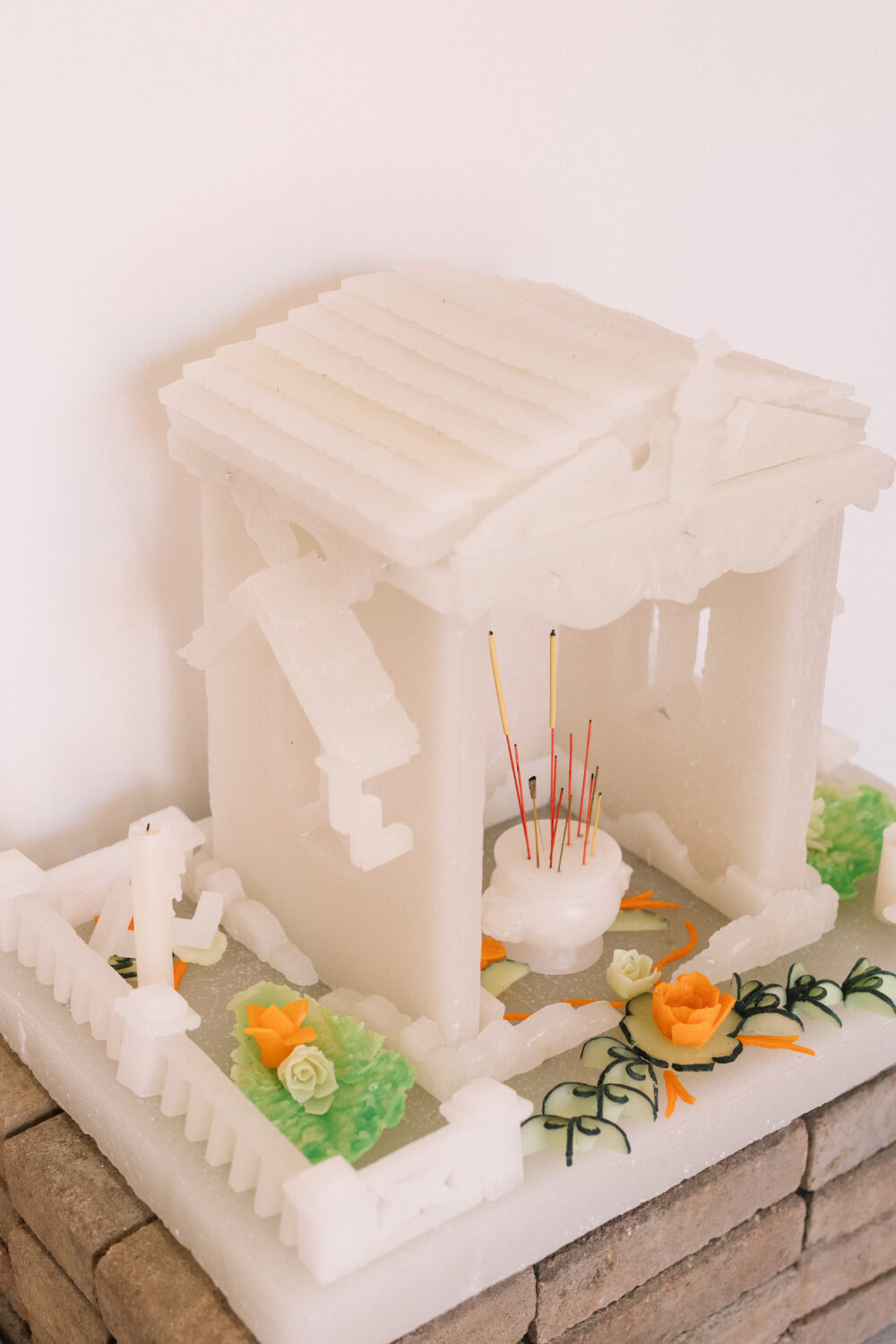
Photograph: Thomas McCammon
- Artwork Faltar
- Artist Shaye Du’o’ng
- Year 2022
- Medium parrafin wax, brick, assorted fixtures
- Size dimensions variable
-
- Artwork 댄싱머신: Dancing Machine a.k.a Dancing Teddy
- Artist EJ Son
- Year 2022
- Medium video
- Size 5:03mins
-
- Artwork loving/dying/hating/living (i’ve come to a gradual state of undoing)
- Artist Jazmine Deng
- Year 2022
- Medium single channel moving image, red chinese stools, jelly beans, man tou, my mother and grandmother's jewellery, chinese broom, found paraphernalia from my family home, sound recordings taken from inside of my family home, footage of food to be eaten, food to be cooked, food to be thrown out, younger sister playing the piano
-
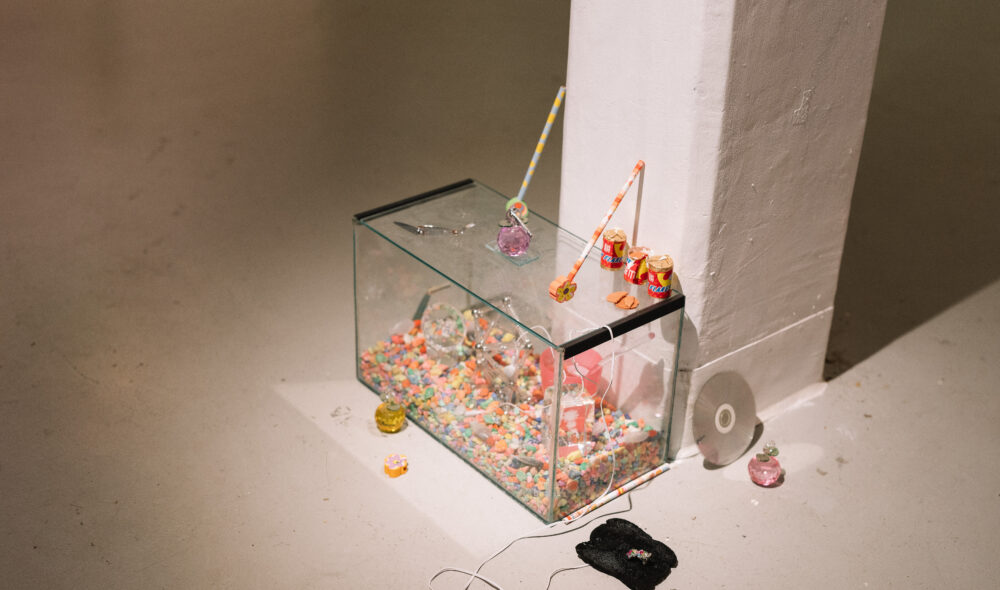
Photograph: Thomas McCammon
- Artwork loving/dying/hating/living (i’ve come to a gradual state of undoing)
- Artist Jazmine Deng
- Year 2022
- Medium single channel moving image, red chinese stools, jelly beans, man tou, my mother and grandmother's jewellery, chinese broom, found paraphernalia from my family home, sound recordings taken from inside of my family home, footage of food to be eaten, food to be cooked, food to be thrown out, younger sister playing the piano
-
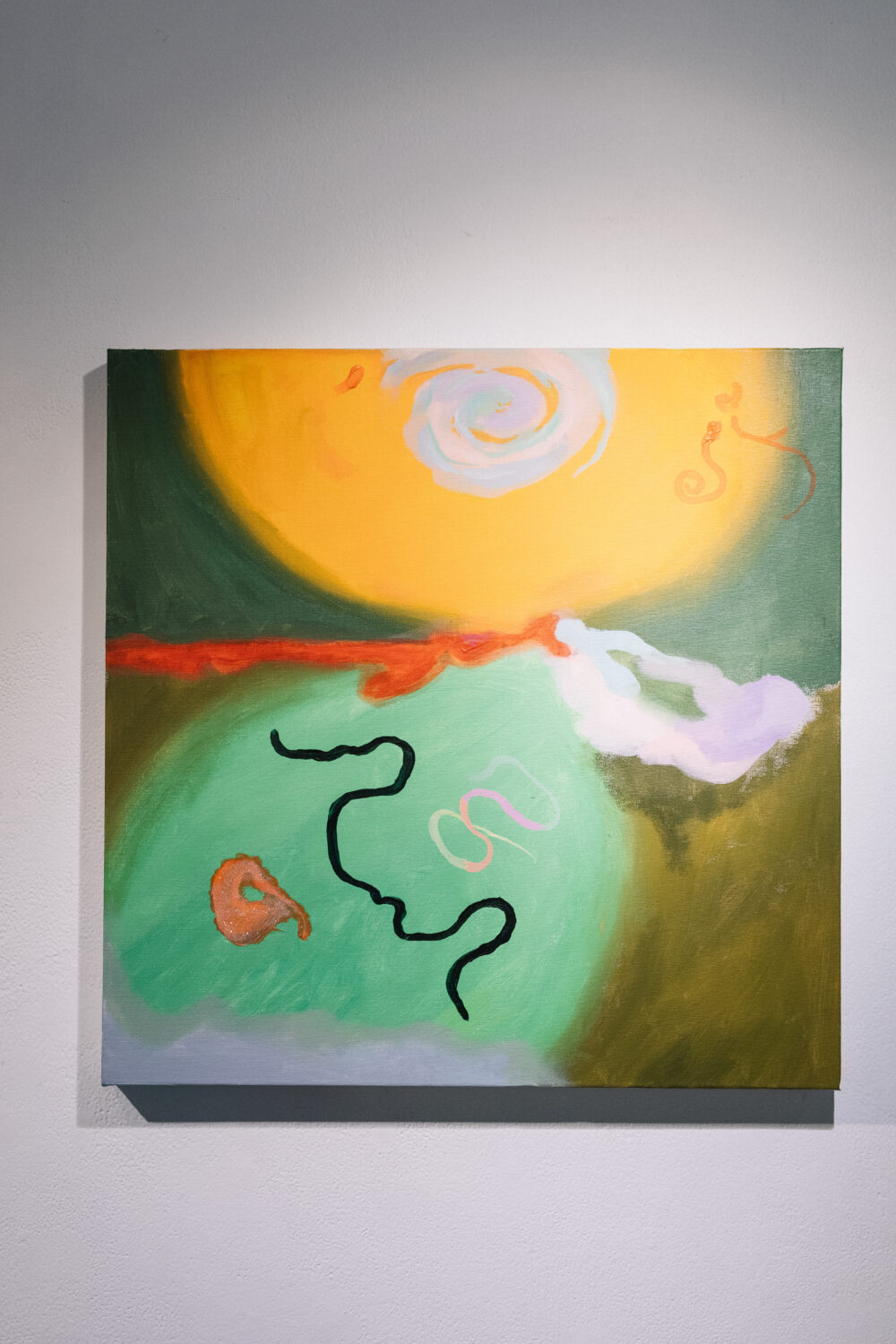
Photograph: Thomas McCammon
- Artwork oranges and kiwis
- Artist Jazmine Deng
- Year 2022
- Medium acrylic paint on canvas
- Size 61 x 61cm
-
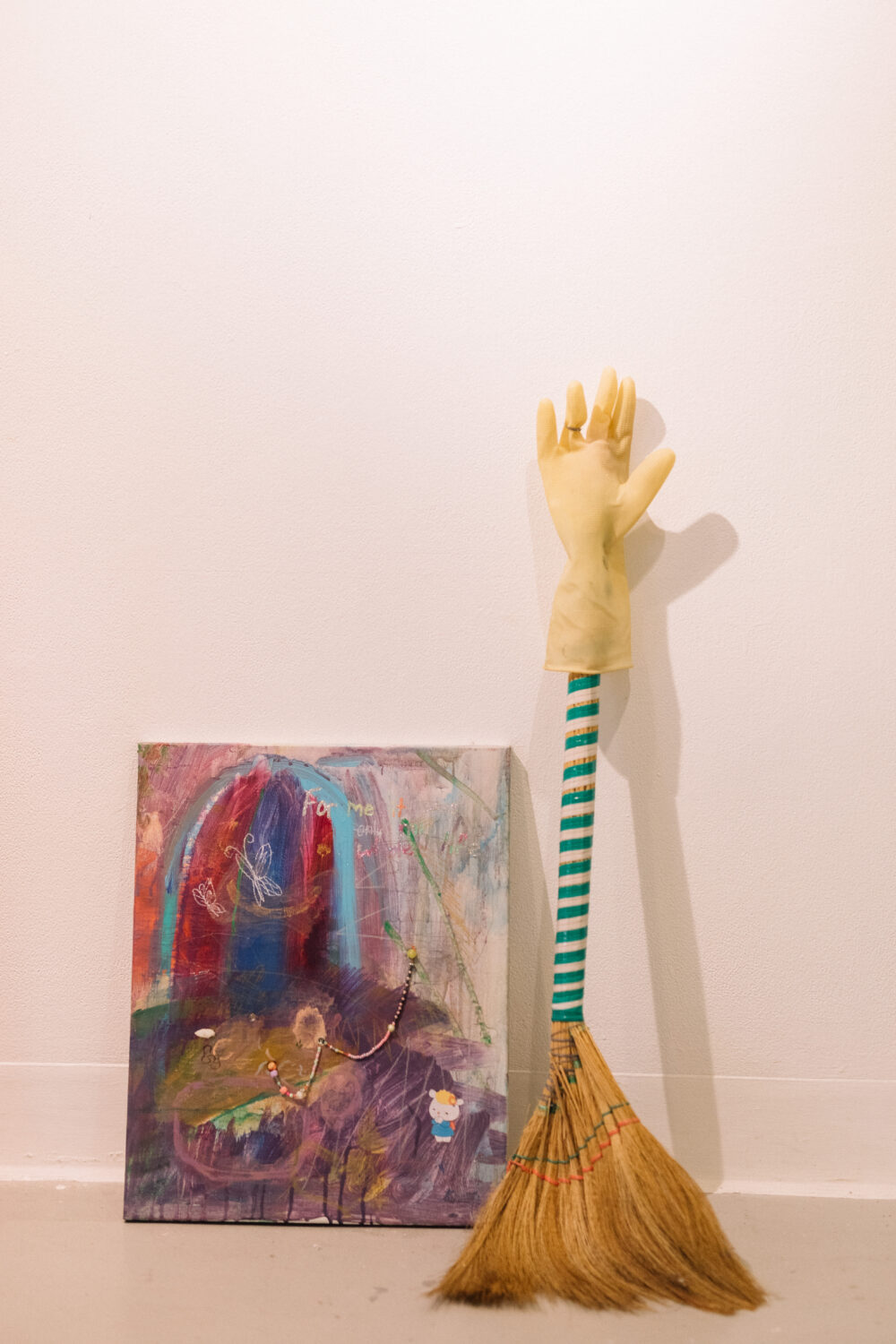
Photograph: Thomas McCammon
- Artwork for me it was my whole life
- Artist Jazmine Deng
- Year 2022
- Medium acrylic paint, colour pencil, graphite, canvas paper, paper, beads, string, nail polish, glitter
- Size 40.5 x 50.5cm
-
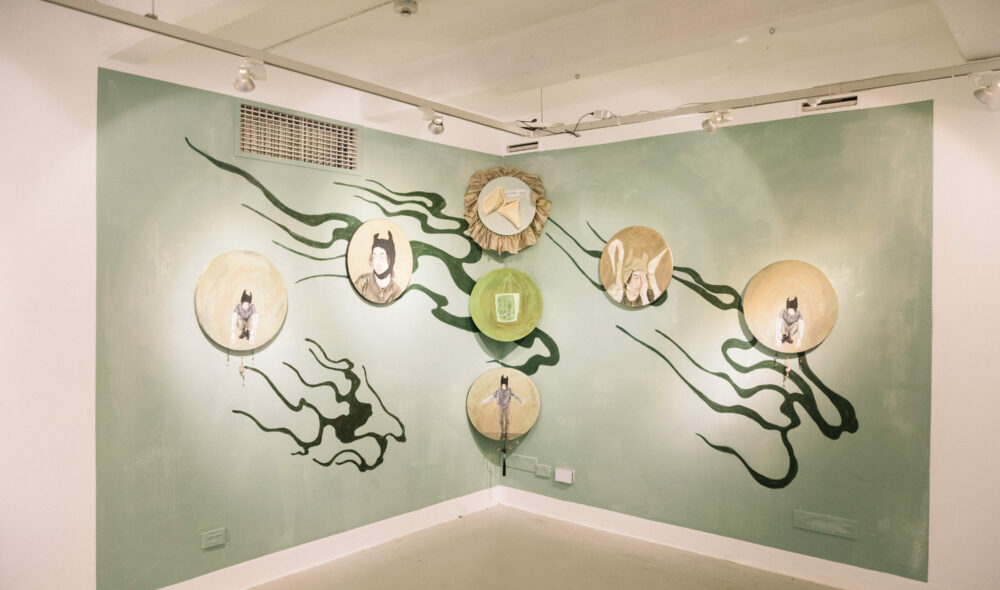
Photograph: Thomas McCammon
- Artwork Fortune says: it's Britney, bitch; Speak mandarin, it’s an asset; Curious devil boy; Devil boy; Devil boy with cranes; Devil boy, tiger trinket; Devil boy, rooster trinket.
- Artist Jake Yang
- Year 2022
- Medium oil on board, taffeta, silk, fabric,
-
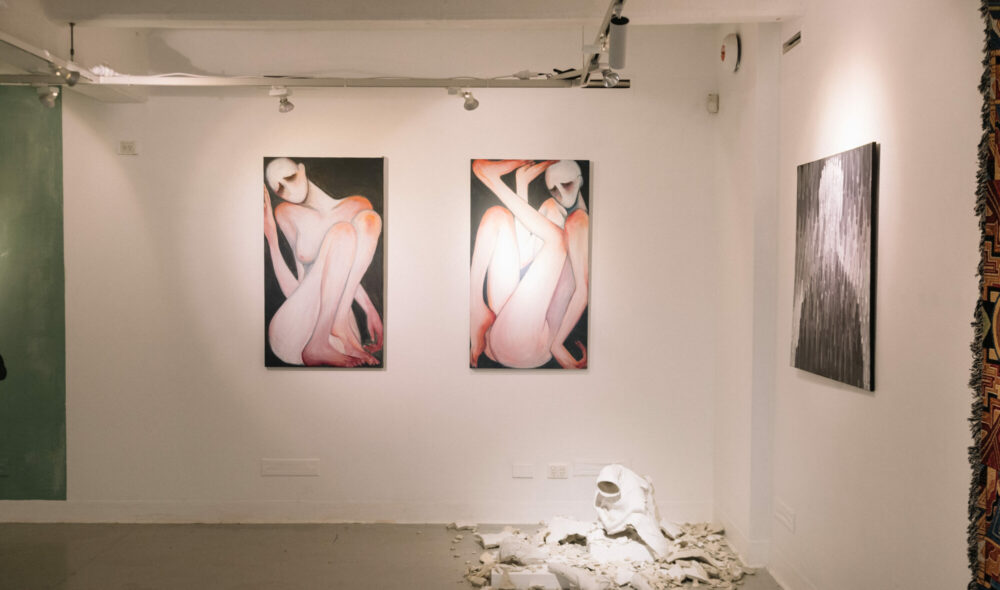
Photograph: Thomas McCammon
- Artwork My body is a vessel #1 ‘My body is a vessel. It holds me, protect me, and imprison me.’;My body is a vessel #2 ‘My body is a vessel. It holds me, protect me, and imprison me.’; Anonymous, Growth.
- Artist Alice Hu
- Year 2022
-
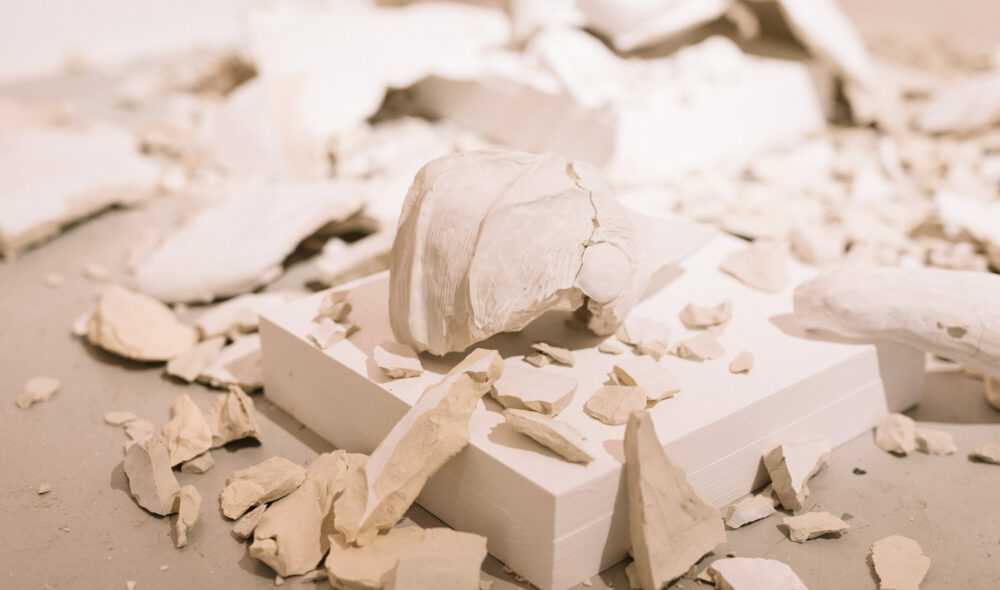
Photograph: Thomas McCammon
- Artwork Growth; 'completion'
- Artist Alice Hu
- Year 2022
- Medium ceramic
- Size dimensions vary
-
![ID: A photograph of three large woven tapestries by [artist]. Each tapestry is around 2m tall and 1.5m wide, and filled with detailed geometric, illustrative designs in brown, red, orange, blue and white. The images include an angelic figure making metal handsigns, crowds of doll-like humans dancing with leaves, and a large blue tiger with a long snake tail. Alt: Three large woven tapestries filled with detailed geometric, illustrative designs in brown, red, orange, blue and white.](https://nexusarts.org.au/wp-content/uploads/2022/10/0H1A8200-e1666416610826-1000x590.jpg)
Photograph: Thomas McCammon
- Artwork Angels In Play, Mirror Ball, and Crossing Line.
- Artist Chris Yee
- Year 2021
- Medium woven cotton tapestry
- Size 54 x 72 inches
-

Photograph: Thomas McCammon
- Artwork No Laughing
- Artist Shaye Du'o'ng
- Year 2021
- Medium paraffin wax, paper, fixtures
- Size 75 x 60 cm
Catalogue essay
sway and repeat, an equilibrium
Nikki Lam
A pendulum pivots when its equilibrium is disrupted, forced into an almost forever swing.
When I think about a pendulum, I am reminded of the force of gravity, and the resistance nature might impose on a man-made structure to restore or be restored. Held by physical forces that are invisible to the human eye, we marvel at the momentum a pendulum is able to produce when activated by the slightest displacement.
This hopeful and constant device—the pendulum— presents itself as a metaphor for diaspora in this exhibition. Curator Jonathan Kim describes the pendulum as an intermediate position between cultures, where artists of this exhibition operate within; be that a position that is balanced when rested or swinging longingly. One may interpret the pendulum as the representation of a type of duality that diasporic artists may live or be inspired by; to me, however, it presents a structure held by tensions that these artists often carry through time.
I am imagining a choreographed event, where we all hold our own pendulums. They vary in shapes and sizes. At different speeds, we sway.
Existing between cultures—lived or imagined, as migrants or their children—regardless of one’s connection, we
are often left feeling unbalanced, as if identity was ever
a clearly defined self, fixed for eternity. I prefer to think about this existence as an accumulation of histories and personal experiences, and that it is only through practising repetition when we feel closer to a sense of belonging, or equilibrium. Sometimes this repetition is manifested through performing culture(s), or practicing rituals, responding to what is still foreign with the familiar. Other times this repetition is done through re-purposing and re- interpretation of cultural symbols, practices and identities. Fragmented or hybridised, repetitive cultural practice is always present in the diaspora.
Swinging back and forth is a structure that motions repetitively when displaced, sometimes hypnotised, on repeat.
Cultural theorist Ien Ang describes how critical diasporic cultural politics should privilege ‘neither host country nor (real or imaginary) homeland’, but instead should maintain ‘creative tension between “where you’re from” and “where you’re at”’. (Ang 2001) This creative tension speaks of not only cultural hierarchy within oneself, but an ability to mobilise and critically reflect on multiple cultures at once, regardless of one’s current condition(s) and/or location(s). It allows for a relationality that is constantly being negotiated, from within and with each other. When cultures are forever changing, our relationships to them must also be examined constantly in order to maintain such tension. It is with this tension that diasporic artists create: remembering and reimagining, tearing and weaving, making cultures anew.
I imagine a pendulum that is held by tensions of this kind, by forces that are invisible to the naked eye—a structure that leads to the restoration of a type of equilibrium that cannot be achieved alone. It could be a restoration of an embodied proximity to homeland, or confidence in a cultural practice that belongs to nowhere or everywhere at once: memories, cultural symbols and practices of multiple origins reaching forward to hold us in place. A million tiny tensions that live in our bodies, thriving for balance, or healing, or peace. An equilibrium of restoration for each other.
Holding our multi-faceted selves until friction kicks in and the pendulum eventually rests. The next swing is triggered and we sway again. Pendulum as our mark, this is a dance en masse. But maybe, it is actually a movement?
Pendulum
This exhibition is the sequel to last year’s East Wind, which involved six emerging artists, most of whom were first-generation immigrants from east Asian countries. My core art concept of Gong-gan-seong was rooted in the East Asian cultural background, so my research investigated the new meaning and extensibility of Gong-gan-seong in the work of other artists from East Asian countries. East Asia is a term I defined that refers to countries located in the east of the Himalayas and share the influence of Buddhism, Confucianism, Taoism, and Chinese character culture.
This exhibition focuses on second-generation artists from East Asia and discusses how the acculturation transformation between home and host countries occurs in their works. When Oz Asia commissioned me for this exhibition, I separated Oz from Asia. The tiny vortex found in the gap between two words that did not seem tightly bound yet reminded me of second-generation immigrants from Asia. Because Gong-gan-seong is about the relation between two elements, the interaction between the home country and the host country has become a new agenda under the theme of acculturation in this exhibition.
Each artist’s works in this exhibition are inspired by their multicultural experience. They present concrete examples of acculturation according to the timing of the diaspora of their cultural communities and family groups.
Alice experienced the settlement with her parents from China to Australia as a child. Her childhood, I heard through her voice, was easy. On the contrary, I have been able to see how those experiences have traumatized her by the titles of her works, ‘Growth’, ‘My body is a vessel’, ‘Anonymous’ and ‘Completion’. Alice’s giant ceramic sculptures exploded inside a hot kiln and broke into pieces. Alice always says it is okay, but her work looks like her broken body and ego. However, the cold debris looks as if they are united and trying to stand up in the gallery.
“I grow up been pushed into facing my identity, my ideas of belonging and everything that makes me ‘different’, but now I no longer consider those experience that used to traumatize me as bad factors, I attend to use them as my advantage, accept who I am, and allowing and supporting more artists especially the ones of multicultural backgrounds to be inspired by my work.”
Jazmine covers a variety of media, including painting, sculpture, video, and performance. The first encounter with her collection and how she works is quite embarrassing. At first glance, it seems culturally coherent, but it is unidentified. Jazmine’s work through various media is only a means to collect and investigate her leftover traces. Jazmine seeks to discover her lost parts by bringing up all the cultural elements in her past and reality. What is Jasmine looking for in those traces? Love, attention, identity, ideology?
“To confront the mundane is to embrace spirituality and challenge the ideology of the ‘real world’, which presents itself through capitalism and a Eurocentric dominated world view. As opposed to making anything ‘new’, her practice is focused on the bodily actions and observations she can express through that which already exists in front of us.”
ej son, with provocations and humour in her art, resists the asymmetric power structure between cultures. When I was surprised by her fluent Korean skills, ej said she learned Korean to fight her father. Also, ej was always like a warrior ready to fight for the underdog. The ‘Dancing Machine’ was born from the inspiration of the story of the artist-king Pygmalion of Cyprus and his sculptural waifu. Furthermore, the dance moves came from the global trend of #zerotwodance online in 2020. ej humorously sublimated a serious question about the power structure through a teddy bear waving its hips to romantic jazz music.
“EJ Son likes to imagine the idea of the creator behind these dolls to be a woman. They believe it’s of utmost importance to have diverse voices in visioning the future and are curious to see their imaginings. In their new exhibition, 댄싱머신: Dancing machine, they ask, If robots were in service to the ‘workers’ would that liberate them from ‘labour’? Is it possible to be free from the power structure? and Why do we apply human traits to non-human entities?”
Introspection is a crucial way for Jake to explore the duality of culture formed between traditional Chinese culture and the influence of modern Western culture. Sima Qian(史馬遷), a great Chinese historian, left behind an ancient idiom called Zhiguzijing (志古自鏡). It means to use the past as a mirror for yourself. The image of Jake painted on the surface of the circular wooden boards reminds his past reflected in the mirror. The titles, ‘Fortune says: it’s Brittany, Bitch’, ‘Speak Mandarin, it is an Asset’, and the Devil Boy series seem to deny the traditional Chinese way of looking at him. However, ironically, Jake continues to look into the mirror according to their teachings.
“My body of work explores the concept of the “devil child”, alluding to how a traditional family would view a child that strays away from their cultural expectations. As someone who has neglected a lot of their culture growing up, this idea of following expectations stunted my way of growing and accepting myself.”
Chris Yee is an illustrator, designer & animator who specializes in graphic and textile design. His work begins with pen and ink based on textile design, but the result is transformed into tapestries or billboards through digital work. Chris’s cultural background is as complex as the images in his tapestries. Chris grew up in Sydney’s Burwood area, bordered by Chinese and Korean communities, embracing various cultural influences, including Comics, Wrestling, K-pop, punk and 2000s rap. Within his tapestries, any cultural difference seems to melt into a piece of infinite expansion. Chris’s extraordinary talent combines tradition with the present to create a story for the future.
“Growing up in Ryde of the 1990s and living in Eastwood, he has been raised at the cultural crossroads of Chinese, Korean and Australian suburbia and is a proud member of the evolving Asian-Australian creative identity. He strongly believes that there is a unique character and original narrative found within this ever-changing community.”
Shaye Dương’s work explores the differences between the home and host cultures through objects or concepts between her consciously or unconsciously influenced the two cultures based on the Vietnamese diaspora experience. Shaye’s found materials are essential elements in her practice. They are often reproduced through wax casting and reassembled with other materials. ‘No Laughing’ and ‘Faltar’ show how much time and effort she spends on the process. Shaye’s creations look as far away as the outline of a piece of wax that looks like a vague moonlight.
“I have found that the objects we are exposed to throughout life; ones we hold dear, or even reject, come to shape our perception of the world around us, and what we know to be familiar and comforting. The materials I use are often inspired by this and thereby sourced from my direct surroundings.”
– Jonathan Kim
Meet the artists & curators
Jonathan Kim was born and raised in South Korea and spent most of his 20s in China and 30s in Australia. Like his nomadic life, Kim’s art contains various cultural elements. Kim’s core research places a deep importance on the relationship between a medium and its environmental factors, named as Gong-gan-seong (spatiality), which has been inspired by Korean artist Lee Ufan’s philosophy of Man-nam (Encounter).
Kim was awarded the Constance Gordon-Johnson Sculpture Prize and Linden New Art Award. Kim completed the British School at Rome Residency and Sauerbier House Culture Exchange Artist in Residence and currently works at the ACE Open studio.
I am an emerging artist who has the eager to seek achievements in my practice and build milestones in my professional pathway. My works are often inspired by my multicultural background, the idea of acculturation and my unique aesthetic from personal experience.
I work with multiple medium such ceramics, paintings and installation, as a contemporary artist the medium should not limit my idea but to improve it. I have been working a lot with ceramics at this stage as it has a strong bond with me and my birth country, mythologies stories I grow up listening to, and a unique material that could combine what I’ve experienced in Australia, a material of multicultural with many possibilities.
Chris Yee (b. 1989) is based in East Ryde, Sydney where he works as an Illustrator, Designer & Animator specialising in traditional “pen and paper” methodologies. Initially majoring in graphic and textiles design, Chris believes in the power of character and storytelling and is heavily drawn to constructing narratives ranging from the humorous to the monstrous and macabre. Inspired by Comics, Wrestling, K-pop, punk and 2000s rap, it is the Hyperreal and grey area within these genres, the blurring believability between reality and fiction that he finds most engaging. Growing up in Ryde of the 1990s and living in Eastwood, he has been raised at the cultural crossroads of Chinese, Korean and Australian suburbia and is a proud member of the evolving Asian-Australian creative identity. He strongly believes that there is a unique character and original narrative found within this ever-changing community.
Outside his art practice, Chris is a designer and animator who has produced work for some of Australia’s best-known brands, including VIVID Festival Sydney, Apple, Sony Australia, Estée Lauder, Samsung, Sydney Opera House, Vans, Red Bull, Universal Music and Marvel comics. Chris was invited to speak at Sydney’s 2019 Semi Permanent Festival on Future creative youth and industry. In 2019, he created his first Permanent Heritage Artwork, ‘Tumbalong’ for Chinatown, Haymarket, Sydney.
EJ Son is a multi-disciplinary artist, working across new media, sculptural installations, video and ceramics. With a focus on provocation and humour as a device to interrogate the complexity of power in the construction of gender, sexuality and race. Their practice is often paradoxical, arousing the tension created by our subconscious tendencies to binaries; they aim to deconstruct and create space for new feelings to be considered.
They completed a Bachelor of Visual Arts (Honours) at Sydney College of the Arts in 2018 and are a recent recipient of the Parramatta Artists’ Studios on-site residency at the Powerhouse Museum. They were awarded the 2020 Emerging Artist Prize from the Gosford Regional Art Gallery, and commissioned in 2021 by MAMA Albury to make titty tower (2021), to be presented for SIMMER 2021. They have exhibited at the 4A Centre for Contemporary Asian Art, Bus Projects, Cool Change Contemporary, Verge Gallery, PARI and will be showing at the OZAsia Festival x LEXUS gallery, The Lock-up and The Substation in 2022.
Jake Yang is a recent graduate of Adelaide Central School of Art, Kaurna Land, Adelaide. He explores various disciplines, notably painting, sculpture, textiles, and installation.
Yang’s art practice explores queer youth culture and the way it sits alongside and intersects with his cultural background, raised in a conservative traditional Chinese culture.
In Yang’s work privacy, intimacy, care, and freedom are celebrated in lush, safe natural environments. He challenges the normative assumptions through an examination of intersecting identities and existing in three very different cultures simultaneously (Chinese, Australian and queer).
His practice explores internal conflict, a sense of fracture as well as the longing for cross- sacredness and celebration of safe spaces.
Yang’s painting practice is influenced by traditional Chinese cultural artefacts and techniques as a means of connecting back to his neglected cultural identity growing up. Exploring queer culture and personal relationships in art is a practice of empowerment, self-development and self-acceptance.
Jazmine Deng is an early-career multidisciplinary artist whose practice spans performance, screen-based media, sculpture, assemblage, painting and installation. As a second-generation Chinese-Cambodian Australian, her practice is informed by cultural contradictions experienced as a child of migrants, living amidst late-state capitalism. Jazmine’s processes aim to foster a reciprocity between our bodies and what European dominant worldviews call the external world. Through her existing relationships, places and excess within the twenty-first century, she seeks to develop a process for making that is in relation with the world. She values investigative, curious and question-inducing approaches. Her process id informed by the ethical implications of colonial constructs.
She has recently undertaken a residency at the Mongolian International University in Ulaanbaatar (2024), was commissioned by the Adelaide Film Festival to develop a moving image for their Reflective Screen project (2024) and been commissioned by fineprint magazine for their online presentation PAUSE~PLAY (2023). Jazmine has exhibited across Adelaide at The Little Machine, FELTspace, Nexus Arts and The Kerry Packer Civic Centre and was the inaugural performer-in-residence for MUD: HUMUS.
Shaye Dương is an emerging artist based on Kaurna Land (Adelaide). Working across sculptural processes of casting and assemblage, her practice examines human engagement with objects and sites associated with intimacy, security and ritual. Her curiosity is mostly informed by her complex relationship towards the idiosyncrasies surrounding the Vietnamese diasporic experience and the paradoxical position she occupies as both active participant and passive spectator of her culture. Often leaning on inherent themes of translational slippages and spatial uncertainty, Dương aims to create new forms that hold traces of both the arcane and familiar. She is currently a Studio Program artist at Adelaide Contemporary Experimental. Recent exhibitions include presentations at Adelaide Central School of Art; Firstdraft, Sydney; Holy Rollers Studios, Adelaide; and Perth Institute of Contemporary Arts.

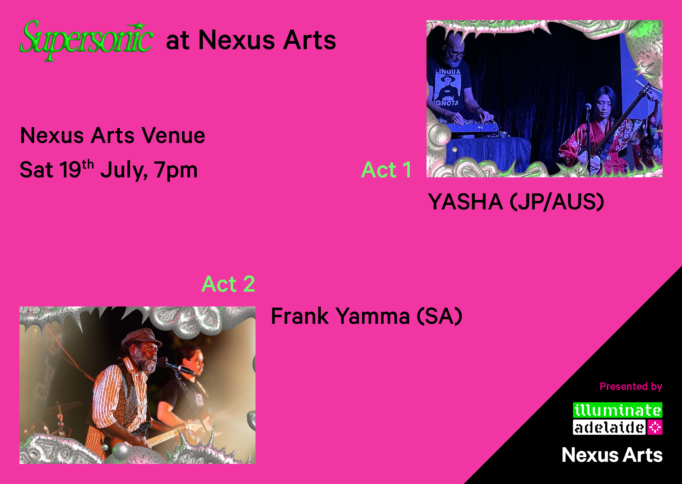

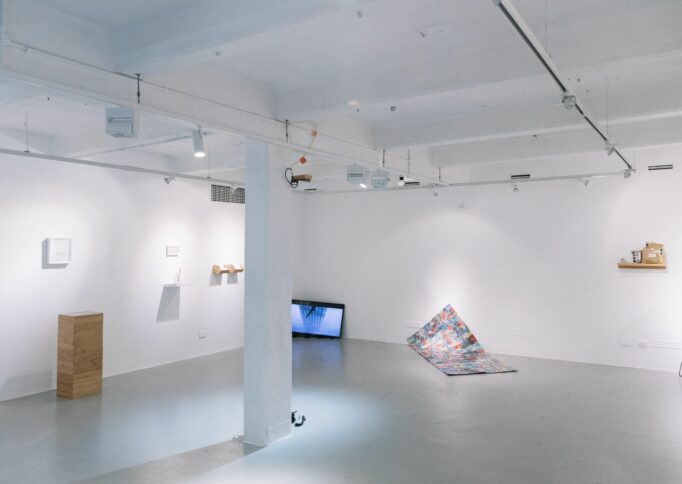
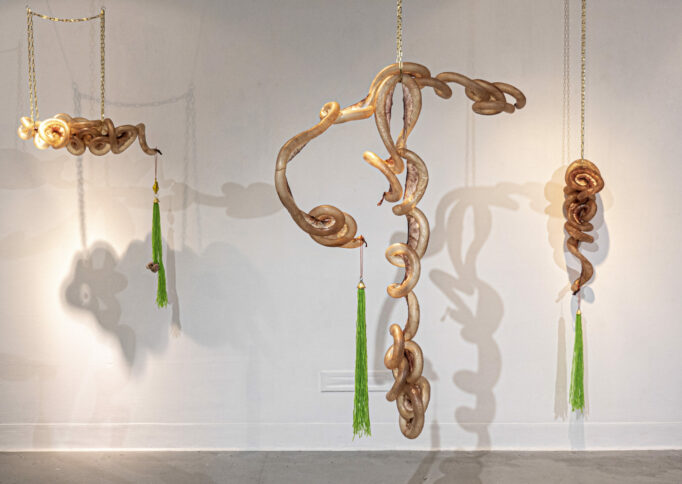
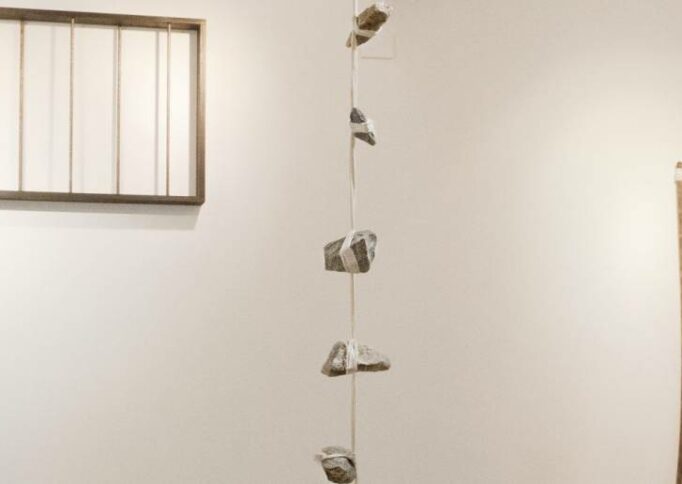
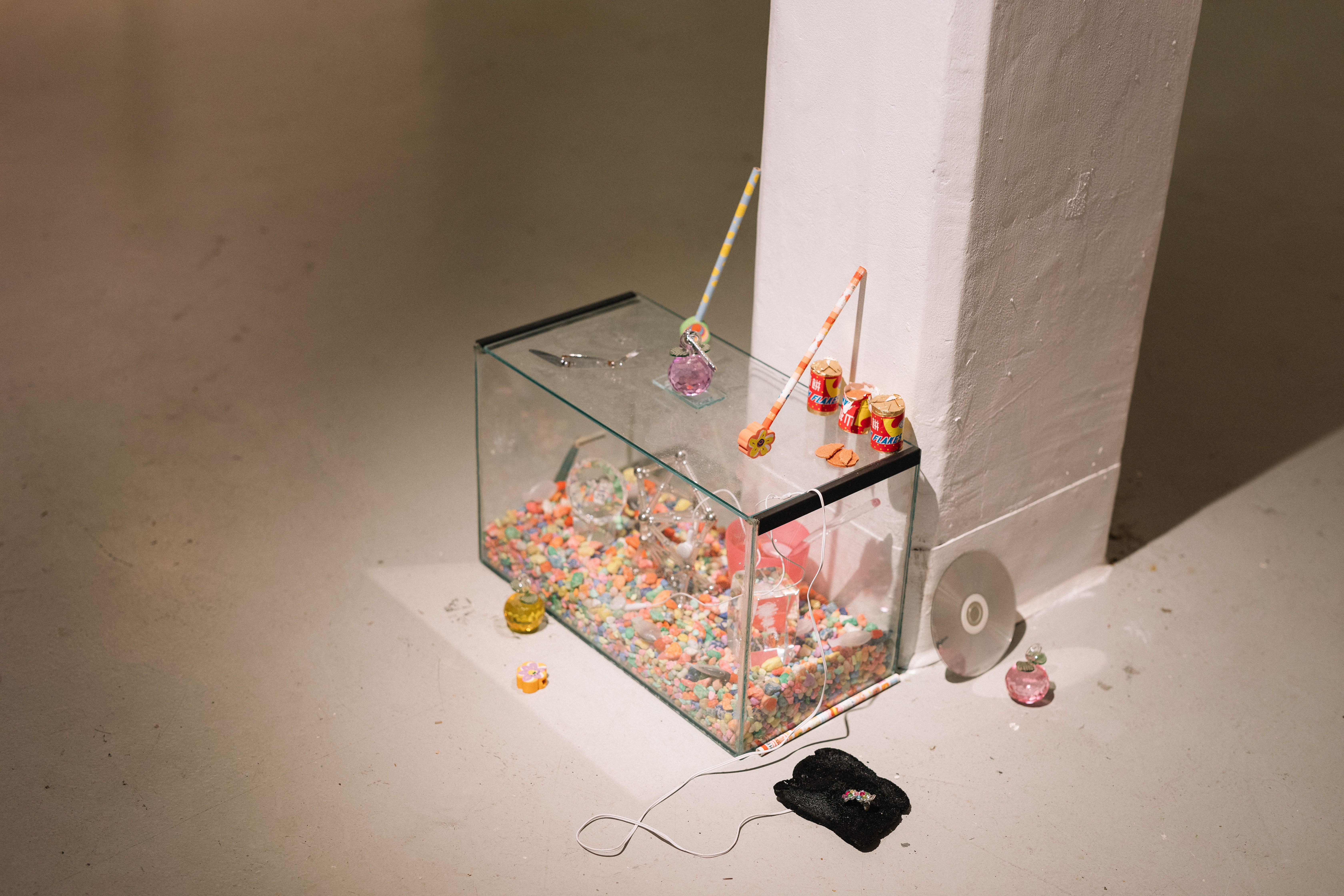
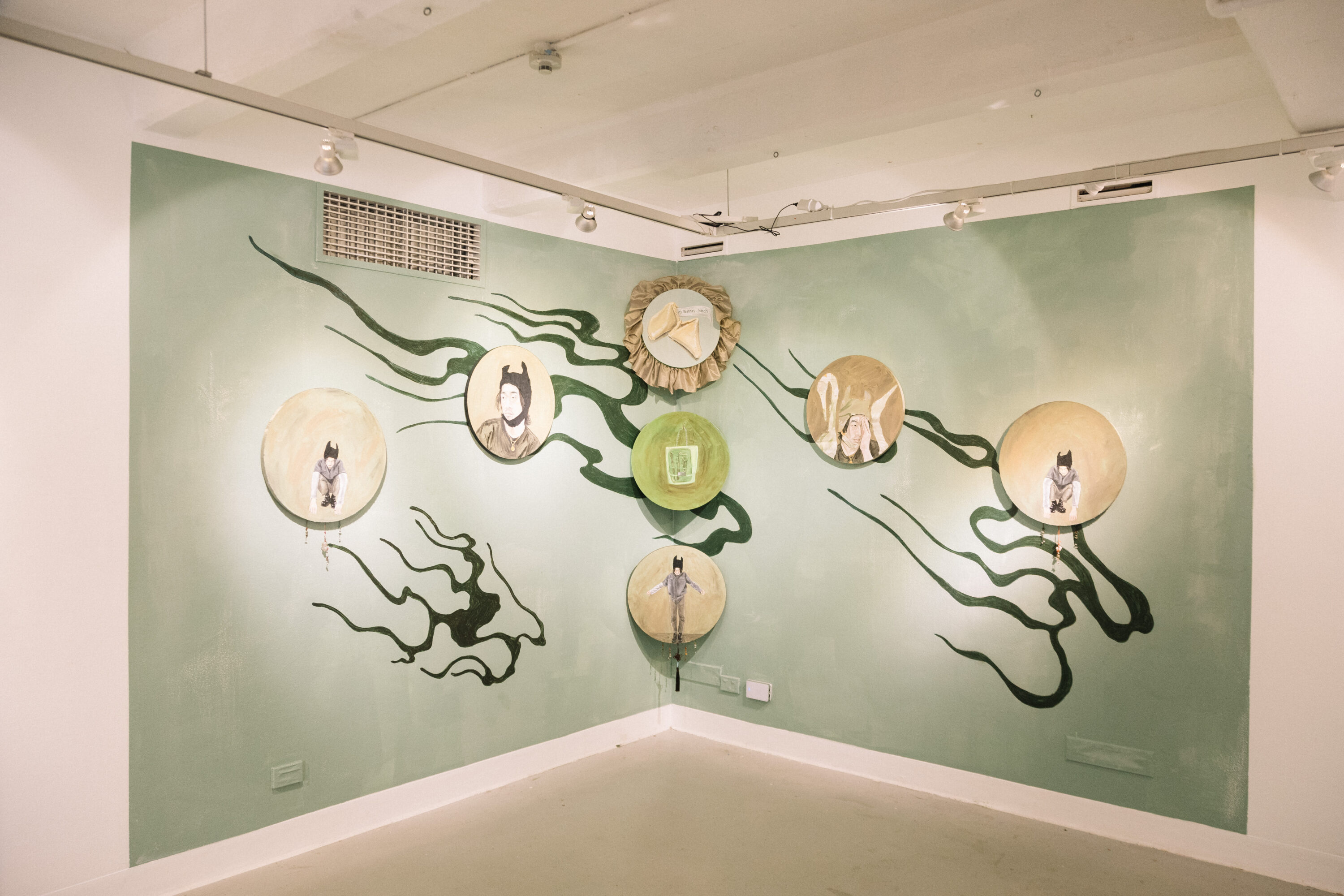
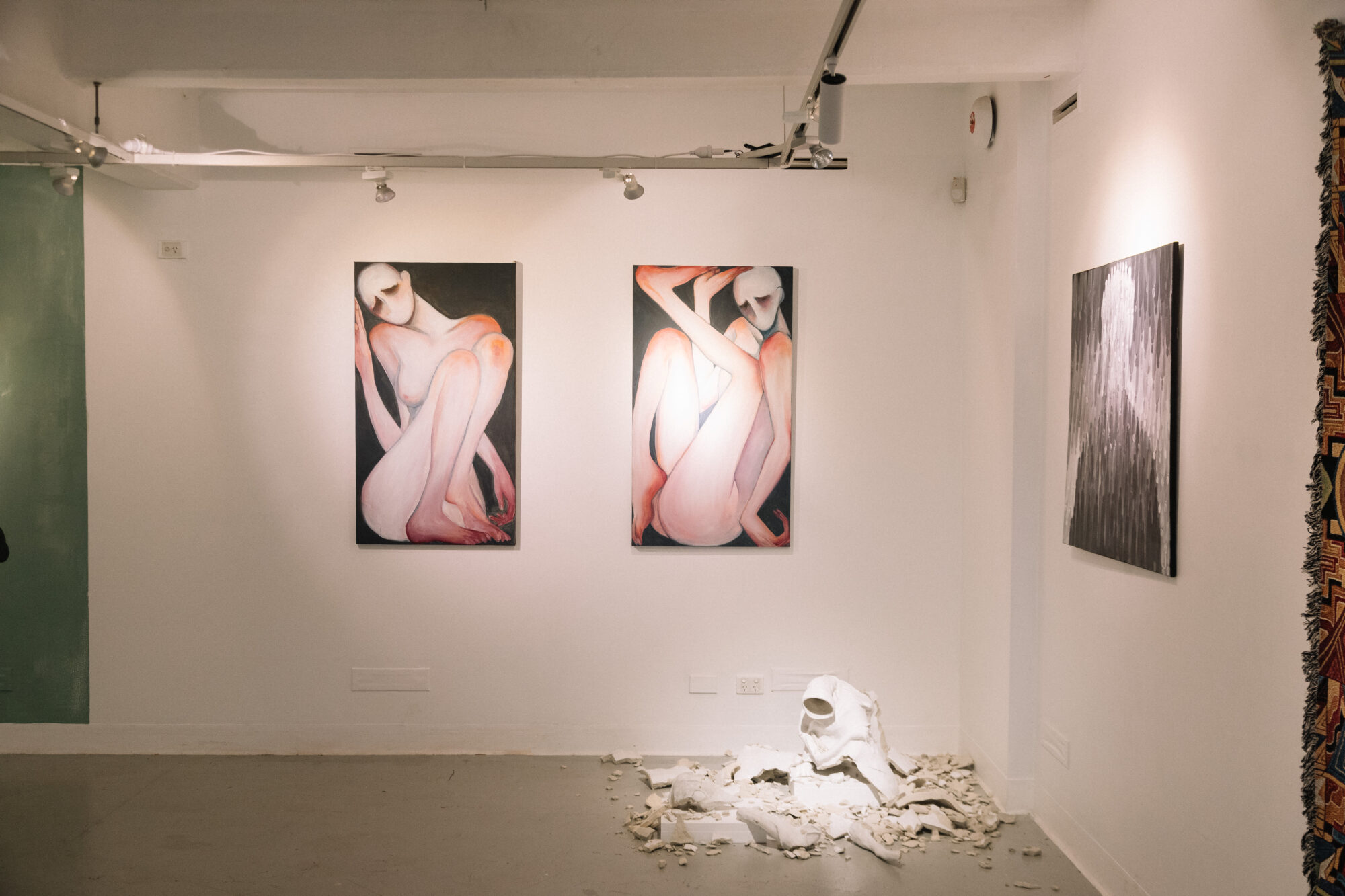
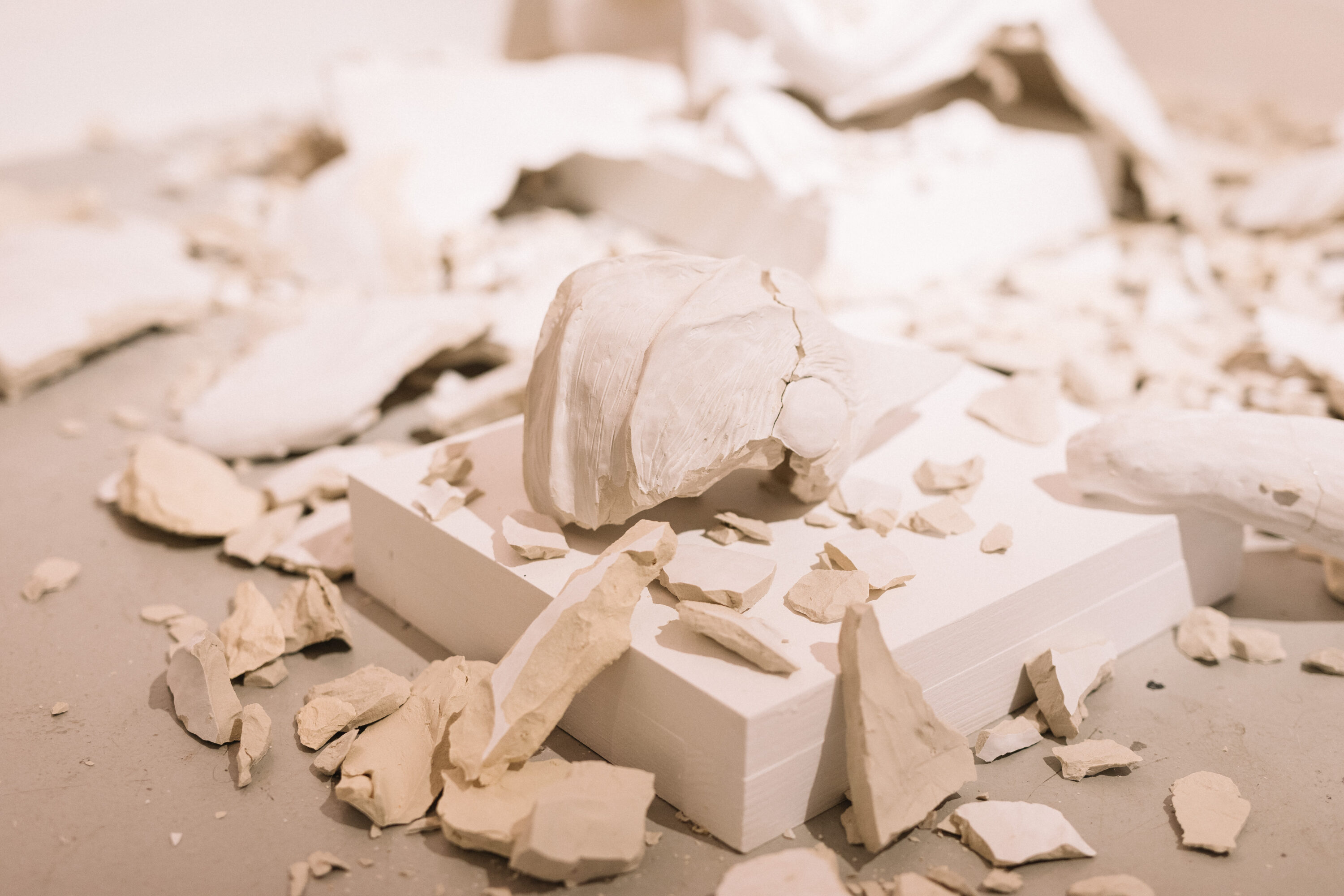
![ID: A photograph of three large woven tapestries by [artist]. Each tapestry is around 2m tall and 1.5m wide, and filled with detailed geometric, illustrative designs in brown, red, orange, blue and white. The images include an angelic figure making metal handsigns, crowds of doll-like humans dancing with leaves, and a large blue tiger with a long snake tail. Alt: Three large woven tapestries filled with detailed geometric, illustrative designs in brown, red, orange, blue and white.](https://nexusarts.org.au/wp-content/uploads/2022/10/0H1A8200-e1666416610826.jpg)